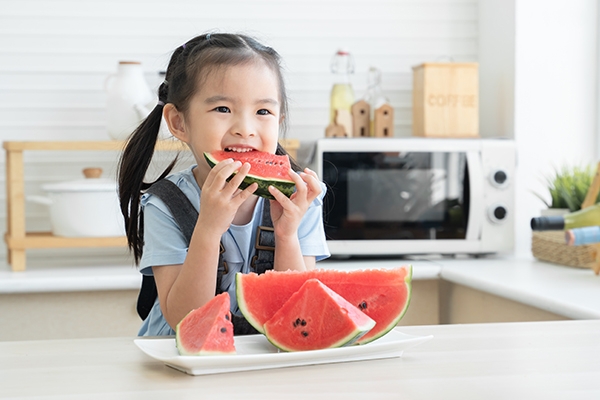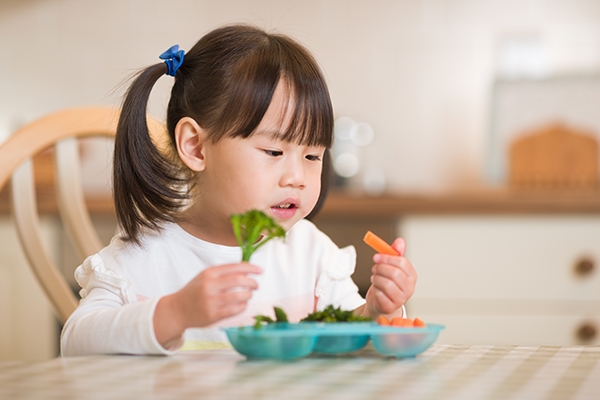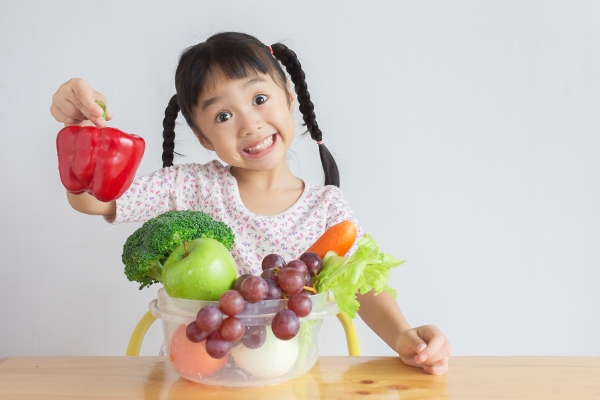Tips for Overcoming Children Who Don't Like Vegetables and Fruits

Getting children to like vegetables and fruits is challenging for parents, especially mothers. Most children think vegetables and fruits taste bad. Even though this food is important for their health, growth, and development, does your little one have difficulty eating vegetables and fruit? Come on, see tips on how to overcome it!
Children have special food needs because they are growing and developing. A good diet gives children the energy to play, study, sleep, and build stronger teeth and bones.
Building good habits in the early years also helps create healthy eating patterns throughout their lives. Vegetables and fruits are some of the best foods for children.
According to the WHO, the ideal consumption of vegetables and fruits for children is 5 portions or 400 grams per day. It consists of two portions of fruits and three portions of vegetables.
Vegetables and fruits are rich in vitamins, minerals, and fiber. Therefore, children should be encouraged to eat various them, as these foods contain more antioxidants than sugary snacks and fast food, which are high in fat and sugar.
Vegetables and fruits provide the following benefits:
- supports children's health, growth, and development.
- prevent obesity and cardiometabolic diseases, such as diabetes, high cholesterol, high blood pressure, and heart disease.
- increases body resistance and helps fight disease.
- improves digestive tract function and reduces constipation.
- improve mood, mental health, and the learning process. Several studies have found that a healthy and nutritious diet can boost cognitive abilities, such as concentration and academic achievement.
How do you encourage children to like vegetables and fruits?
Teaching children how to eat healthy now will encourage them to make healthy choices as they grow older.
Here are some tips to develop the habit of consuming vegetables and fruits:
1. Create a nice dining atmosphere

Involve children in the cooking process. Invite them to choose vegetables and fruits at the market, help wash them, or decorate them on plates. This will make them more interested and want to eat it immediately.
Eating together can be a fun moment. Invite all family
members to eat together at the dining table, creating a comfortable atmosphere.
You can use this moment to explain the benefits of vegetables and fruits in an interesting and easy-to-understand way. Use educational stories, songs, or videos to get them more interested.
2. Be creative with how you serve vegetables and fruits

You can create vegetables and fruits into interesting shapes, such as stars, hearts, or their favorite characters. Or, you can serve vegetables with various textures, such as boiling, pureeing, or making juice.
Mixing vegetables into their favorite foods can also be a creative idea. This strategy can make children willing to eat vegetables. You can mix carrots into nuggets or spinach into an omelet.
It is also critical to educate them about the importance of eating vegetables directly and teach them to like them in their natural. This will help them develop long-term healthy eating habits.
3. Be a role model

Show your child that you eat vegetables and fruits and enjoy the flavors. Your enthusiasm will rub off on their children.
Avoid pressuring children to eat. Forcing will only make them more resistant. Let them try small portions and applaud their achievement.
4. Give the proper portion

Give a variety of vegetables and fruits in small servings first. Increase the portion gradually. This will make them feel more free to choose what they want.
5. Be patient

Changing children's eating habits takes time and patience. Don't give up easily, and keep trying in various ways. Give them praise and appreciation whenever they try new vegetables or fruits. This will motivate them to keep trying.
Give your child several choices. You can ask, "Do you want to eat a banana or an orange?" This strategy makes them want to try new things when feel in control. Remember, don't force or scold them if they don't want to do it.
6. Choose fruits and vegetables

Fruit and vegetables are healthy choices. They have any color, shape, texture, or variety. Fresh, frozen, canned, or dried. They can be served raw, cooked, steamed, boiled, fried, or grilled.
Variety is key. Try to select fruits and vegetables in different colors, especially orange, green, and red.
- Red fruits, such as tomatoes and watermelon, contain lycopene. This substance contains important antioxidants that can help reduce the risk of prostate cancer and heart disease.
- Spinach, kale, and broccoli are examples of green vegetables. They contain lutein and zeaxanthin, which help improve eye health. Meanwhile, broccoli is one of the best sources of fiber.
This vegetable strengthens the immune system, improves eyesight, and helps regulate bowel movements. - Blue and purple vegetables or fruit, such as blueberries and eggplant, are also high in anthocyanins, which are antioxidants. Antioxidants can help protect the body from free radicals and reduce the risk of cancer and heart disease.
- White vegetables, such as cauliflower, contain sulforaphane and glucosinolates. These substances have the potential to inhibit the growth of cancer cells.
- Carrot is an orange vegetable. This vegetable is high in beta-carotene, fiber, potassium, and antioxidants. Oranges are also part of this group due to their high levels of vitamin C, which enhances children's immunity.
Remember to serve vegetables and fruit in hygienic conditions at all times to prevent pesticide and microbial contamination.
If you need information about vaccinations that suit your child's needs, click WhatsApp or visit the nearest GWS Medika Clinic.



